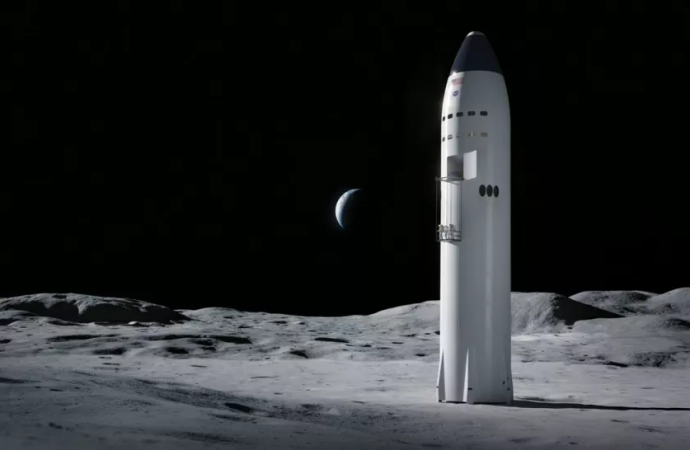NASA and SpaceX will stand down until Nov. 1.
Source: Space.com
NASA must again stop work on its human moon lander partnership with SpaceX due to a lawsuit from Jeff Bezos’ Blue Origin, further risking the agency’s tight timeline to return astronauts to the moon.
In mid-April, NASA announced that SpaceX would build the Human Lander System (HLS), which will ferry astronauts from lunar orbit to the surface, for the Artemis 3 mission due to fly in 2024. But since the decision, NASA has spent just weeks actually working on the partnership due to repeated objections from Blue Origin, which also competed for the contract.
After an independent government agency rejected Blue Origin’s first complaint about the contract, the company sued NASA in the Court of Federal Claims, which exclusively hears cases against the U.S. government, on Aug. 13; the agency has now agreed to pause the project for 2.5 months in exchange for resolving the lawsuit by the end of that window.
“NASA has voluntarily paused work with SpaceX for the human landing system (HLS) Option A contract effective Aug. 19 through Nov. 1,” NASA officials wrote in a statement emailed to Space.com. “In exchange for this temporary stay of work, all parties agreed to an expedited litigation schedule that concludes on Nov. 1. NASA officials are continuing to work with the Department of Justice to review the details of the case and look forward to a timely resolution of this matter.”
NASA’s Artemis program to return astronauts to the moon is built on partnerships with American businesses as the agency continues the model it established with its commercial cargo and crew programs affiliated with the International Space Station. While astronauts will launch on the agency’s own Space Launch System (SLS) megarocket and Orion spacecraft, NASA wanted to use a commercial partner to ferry them to the lunar surface.
Three groups submitted proposals to fill that role: SpaceX, Dynetics and a so-called National Team led by Blue Origin. Many expected NASA would select two, as it did for the space station contracts; meanwhile, Congress allotted significantly less money for the program than NASA had requested, $850 million compared to more than $3 billion.
So NASA only awarded one contract, and only to SpaceX, which had made the smallest bid and planned to adapt its already-in-the-works Starship vehicle and Super Heavy booster for the job. Blue Origin and Dynetics promptly asked the Government Accountability Office (GAO) to review NASA’s decision, forcing a pause on the project; that office on July 30 announced that it would let the selection stand.
Two weeks later, Blue Origin brought the issue to the Court of Federal Claims.
The suit marks another delay in a process that NASA presumably hoped would unfold smoothly. The agency’s Artemis schedule was always ambitious; less than a year after its announcement, COVID-19 swept the globe, forcing the government and companies alike to halt on-site work.
Other vital pieces of the program have also faced delays: NASA’s SLS rocket’s crucial green-run test series ran slow and the final installment required two attempts. Meanwhile, NASA’s Office of Inspector General released a report arguing that NASA’s lunar spacesuits could not be ready before April 2025.
President Donald Trump’s administration established the 2024 deadline, and when President Joe Biden took office, many wondered whether the new administration would delay the program. But throughout the presidential transition and the confirmation of Biden’s selection for NASA administrator, former Florida senator Bill Nelson, the agency has continued to say that it would attempt to meet the ambitious date, provided Congress funded the program sufficiently.
“NASA is committed to Artemis and to maintaining the nation’s global leadership in space exploration,” agency officials wrote in the statement. “With our partners, we will go to the moon and stay to enable science investigations, develop new technology, and create high-paying jobs for the greater good and in preparation to send astronauts to Mars.”
Source: Space.com

































Leave a Comment
You must be logged in to post a comment.